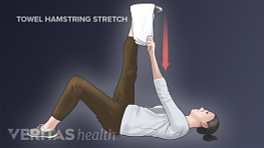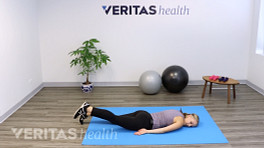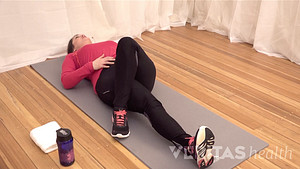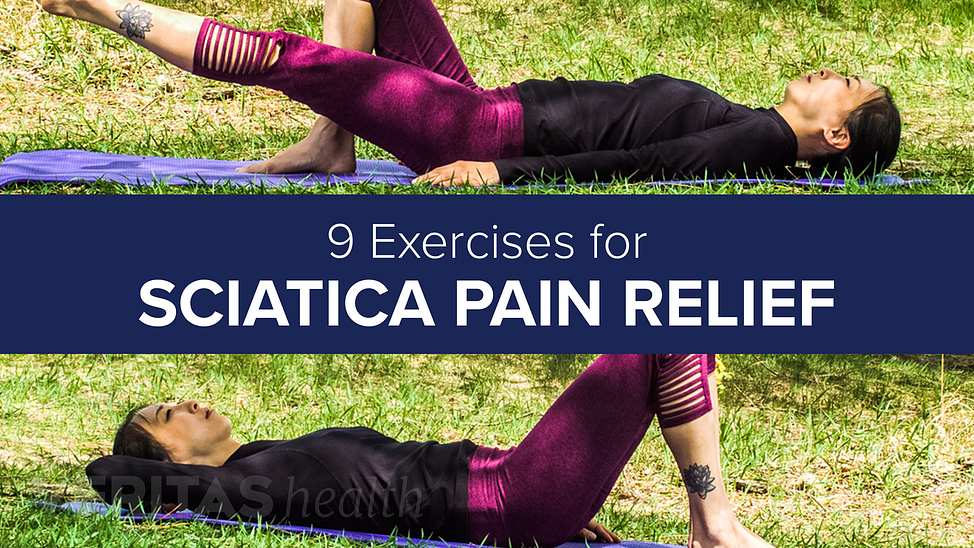
Sciatica is a term used to describe symptoms of leg pain, numbness, and tingling caused by irritation or injury to the sciatic nerve roots in the lumbar spine. Physical therapy exercises are an important part of treating sciatica. Depending on the underlying cause of your sciatica, a physical therapist may recommend one or more of the following exercises to help to alleviate your symptoms.
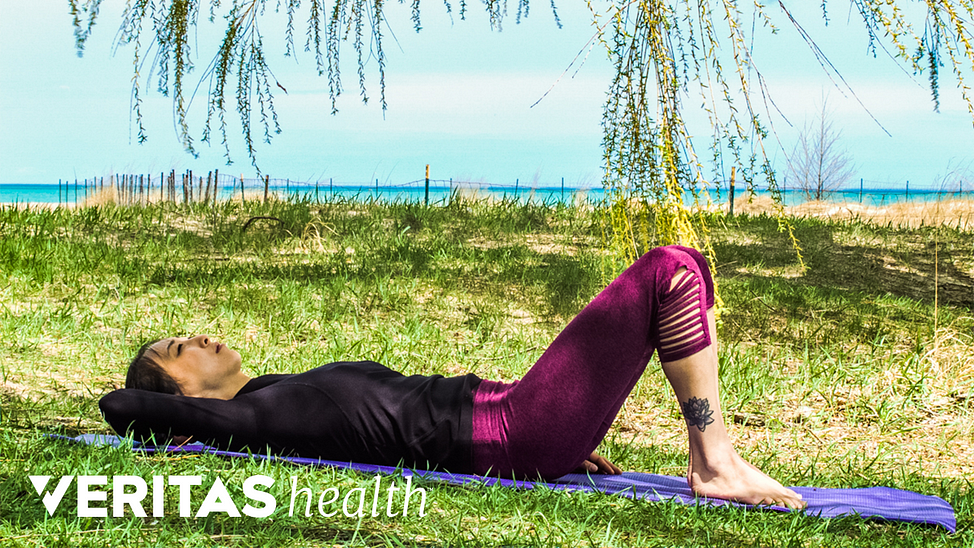
Pelvic Tilt Exercise
The pelvic tilt aids in strengthening the abdominal muscles and is the foundation of many exercises for sciatica pain relief, so performing this exercise correctly is a great starting place. To perform the pelvic tilt lie on your back with your knees bent and feet flat on the ground, and pull your belly button in towards your spine. As you are pulling your belly button in, your back will automatically flatten towards the floor and your pelvis will roll up towards your chest. Hold this position for 20 seconds, then relax. Aim to complete 10 repetitions of this exercise.
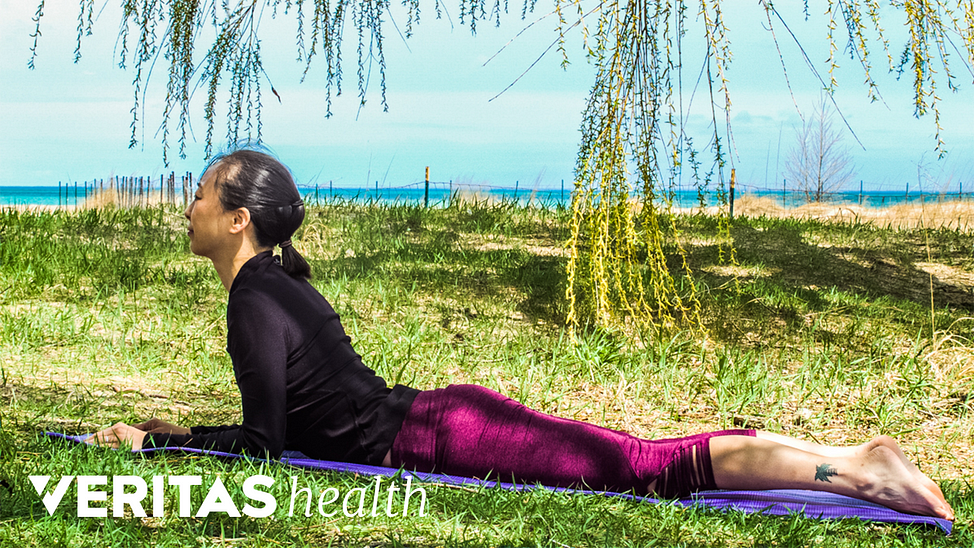
Press-Up Exercise
Extension exercises or press-ups are often prescribed to treat sciatica pain from a lumbar herniated disc. Press-ups utilize a physical therapy technique called centralization, which helps to move pain up from the leg and isolate it in the lower back, where it originates and can be more easily treated. To perform a basic press up, lie on your stomach and slowly prop your upper body onto your hands, while keeping your hips on the floor. Hold this position for 5 seconds and then lower your upper body back to the ground. Aim to complete 10 repetitions every few hours, gradually working up to 30 seconds per repetition. If this exercise is painful, start by propping your upper body on your elbows for a gentler extension.
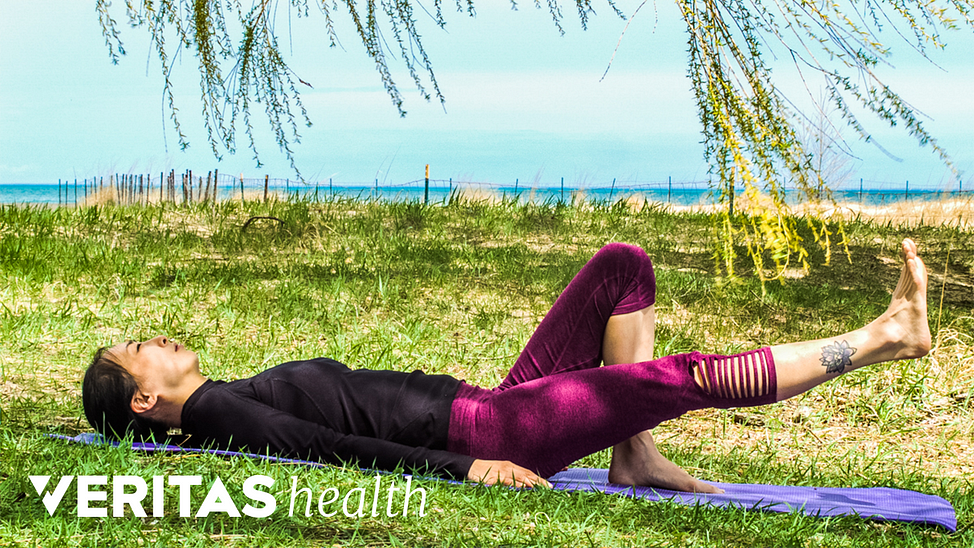
Straight Leg Raise Exercise
The straight leg raise exercise helps to strengthen the abdominal muscles and prevent recurrences of sciatica. To begin the straight leg raise, perform a pelvic tilt by lying on your back with your knees bent up and pulling your belly button in towards your spine. Straighten one leg out along the floor and gently raise it 6 to 8 inches off the ground, before returning it to the ground. Aim to complete 10 repetitions before repeating with the other leg.
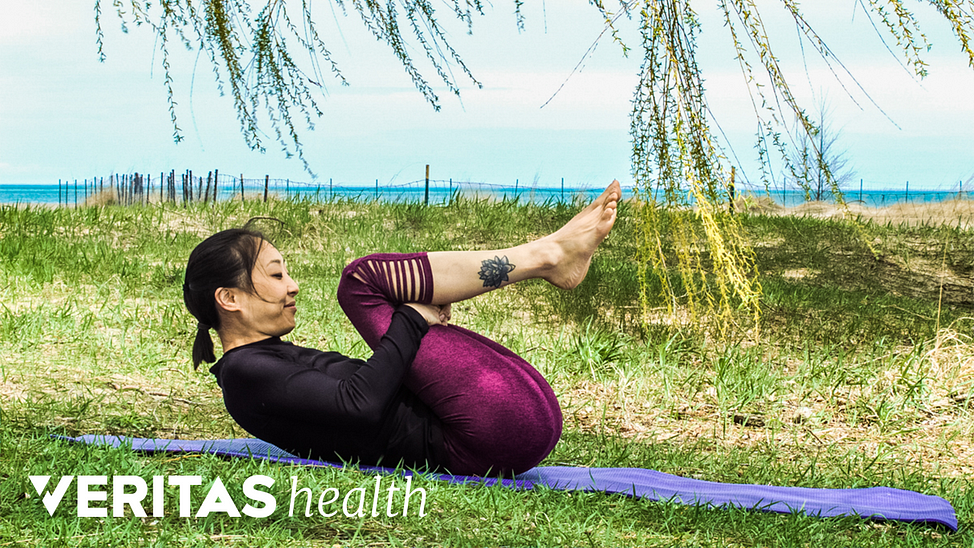
Back Flexion Exercise
Flexion (forward bending) exercises can help to treat sciatica from spinal stenosis by increasing the size of the passageway of the constricted nerve. To perform a back flexion exercise, lie on your back with your legs rested flat on the ground. Gently pull your knees to your chest until you feel a comfortable stretch across your lower back. Hold the stretch for 30 seconds, then slowly lower your legs back to the starting position. Aim to complete 4 to 6 repetitions of this exercise.
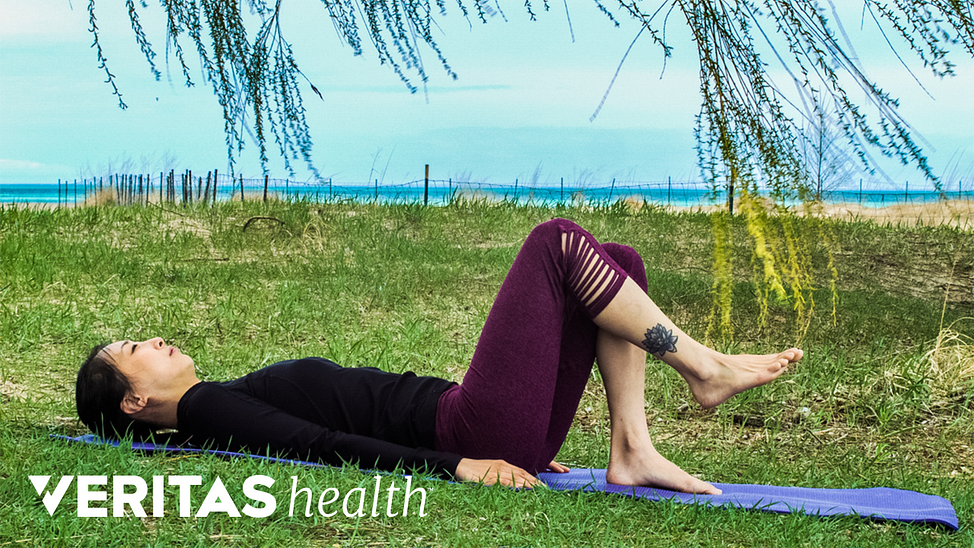
Hook-Lying March Exercise
The hook-lying march is a dynamic lumbar stabilization exercise. These exercises are often used in physical therapy to help prevent lower back pain by strengthening the muscles that support the spine. To perform the hook-lying march, begin by performing a pelvic tilt. Lie on your back with your knees bent and press your lower back into the floor by tightening your lower stomach muscles. Slowly alternate raising one foot at a time an inch or two off the ground. Continue “marching” this way for 30 seconds. Perform two to three repetitions, resting for 30 seconds in between each repetition.
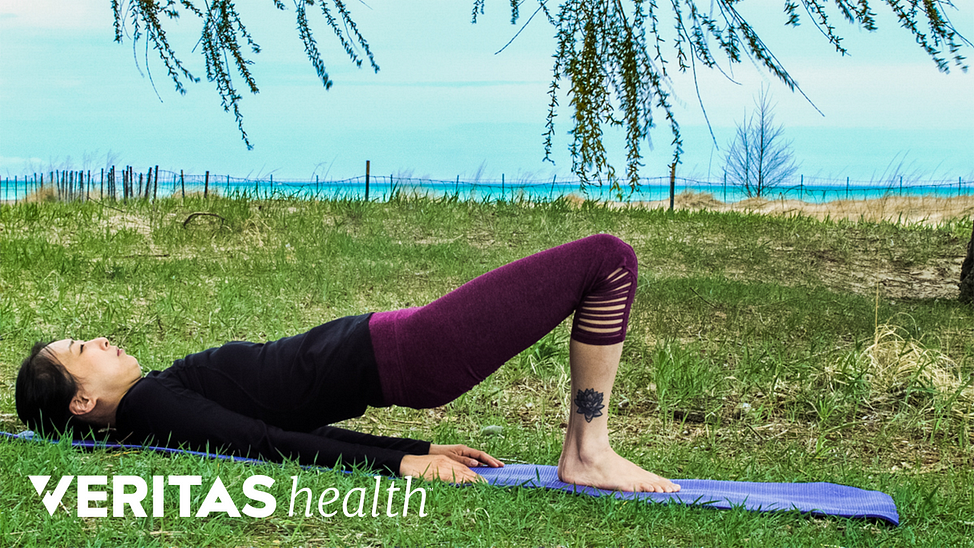
Bridging Exercise
Bridging is another dynamic lumbar stabilization exercise that helps to strengthen the muscles that support the spine. To perform the bridging exercise, lie on your back with your feet flat, knees bent, and your arms on the floor beside you. Slowly raise your buttocks 6 to 7 inches off the ground. Hold this bridge position for 8 to 10 seconds, then slowly lower your buttocks back to the starting position. As your strength builds, aim to complete two sets of 10 bridges.
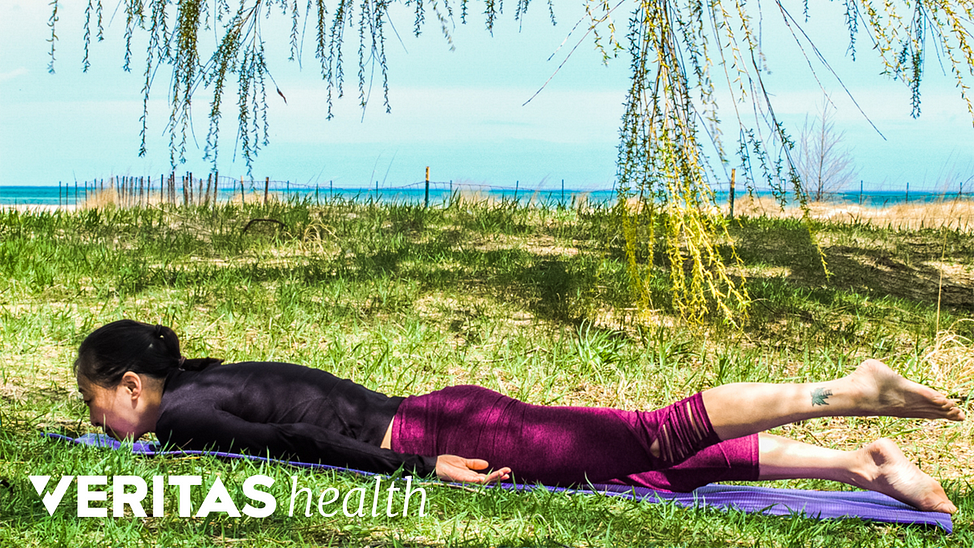
Prone Leg Exercise
The prone leg exercise helps to alleviate sciatica by training the body to maintain a comfortable posture for the lumbar spine and pelvis. To perform the prone leg exercise, lie on your stomach with your arms at your side (palms facing the sky). Pull your belly up towards your spine, and keeping your legs straight, slowly alternate raising one leg at a time about an inch or 2 off the ground. If this exercise if too difficult, you can make it easier by placing your fists underneath the front of your pelvis.
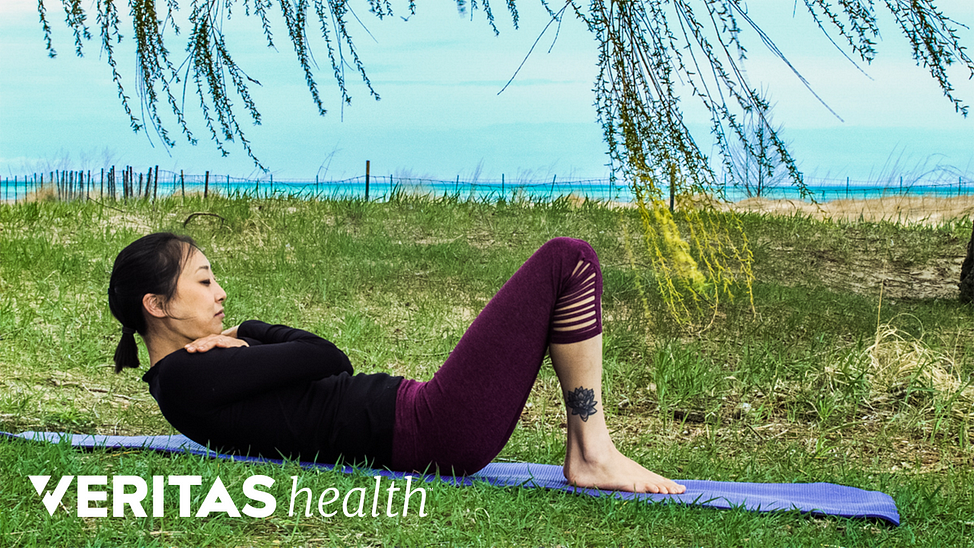
Abdominal Curl-up Exercise
One of the most common exercises that may be recommended to strengthen the lower abdominal muscles and alleviate sciatica pain are abdominal curl ups. To perform an abdominal curl up, lie on your back, fold your arms across your chest, and perform a pelvic tilt by tightening your lower abs. Lift your head and shoulders from the ground towards the ceiling. Hold this position for 2 to 4 seconds and then slowly lower your upper body back to the ground. If performing the curl up results in neck pain, place your hands behind your head to support your neck, but be sure not to lift your head with your hands. Aim to complete 2 sets of 10 curls.
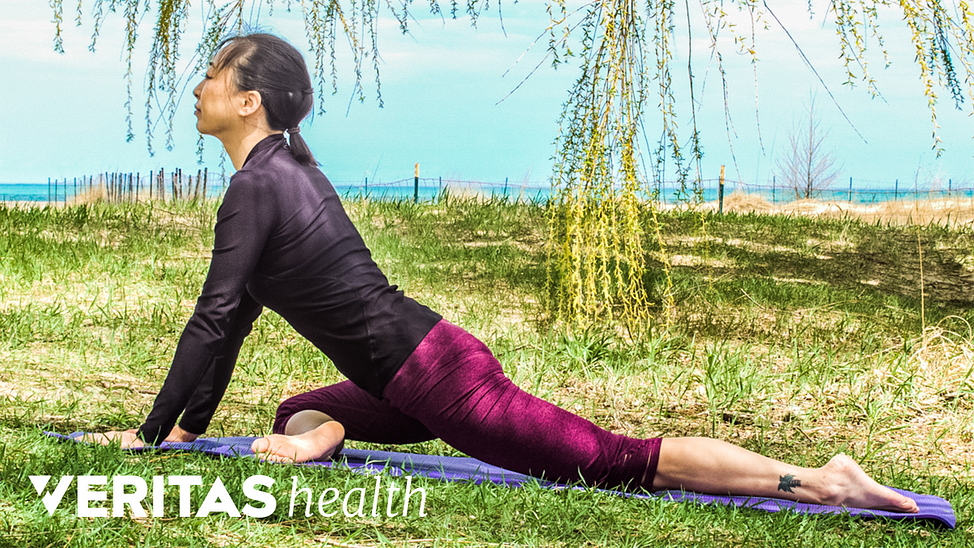
Buttocks Stretch
If sciatica is caused by an injury or irritation to the piriformis muscle, stretching the piriformis muscle can help to alleviate pain and other symptoms. There are several piriformis muscle stretches that may be utilized to treat sciatica. To perform the buttocks stretch, begin on all fours. Place your affected foot across and underneath your body so that your knee is facing away from the body. Extend your non-affected leg behind you, making sure to keep your pelvis straight. Keeping the affected leg in place, scoot your hips towards the floor and lean forward onto your forearms until you feel a deep stretch in the hip and buttock. Hold this stretch for 30 seconds and then slowly return to the starting position. Aim to complete 3 repetitions of this stretch.


